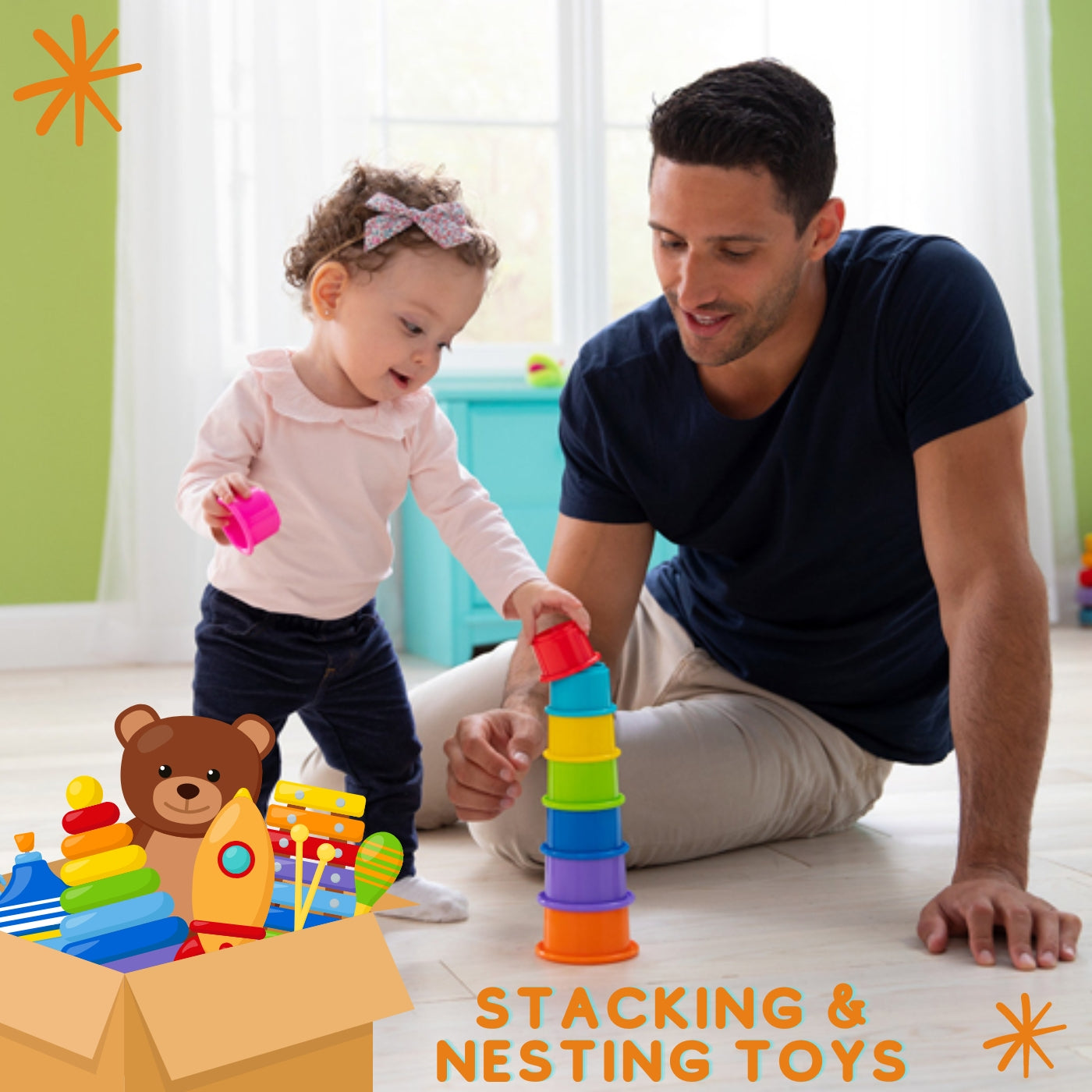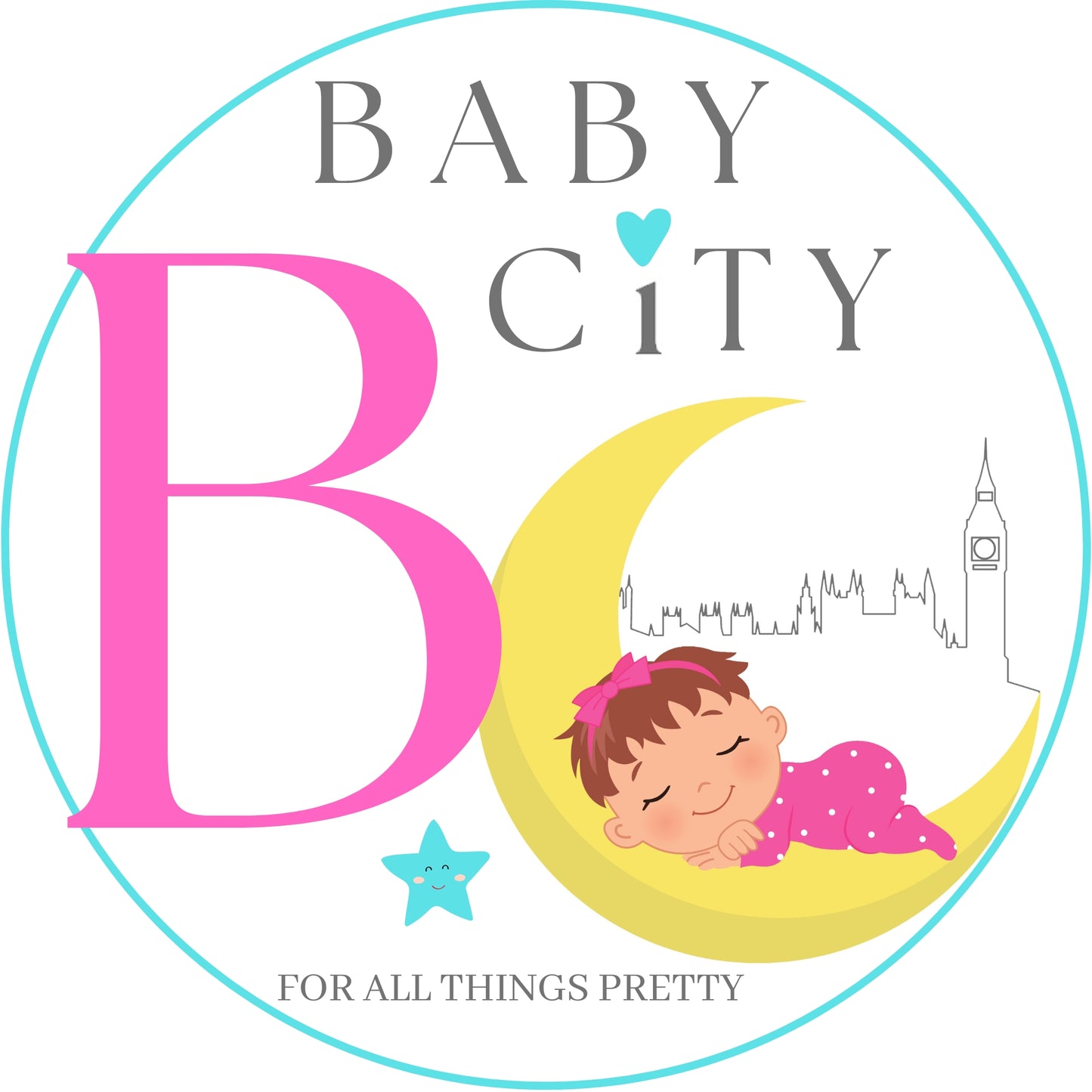
As parents, it's important to provide our children with toys that not only entertain them but also help them learn and develop. Stack and nesting toys are a great option for children of all ages as they offer a range of benefits that aid in child development. From enhancing fine motor skills and hand-eye coordination to fostering problem-solving and spatial awareness, the advantages of these simple toys are numerous. In this post, we will explore the benefits of stacking and nesting toys in detail and provide recommendations for age-appropriate toys to help your child develop and grow.
1. What are stacking and nesting toys?
Stacking and nesting toys are toys that come in a variety of shapes and sizes that can be stacked on top of each other or fit inside one another. These toys are designed to help children develop their fine motor skills, hand-eye coordination, and problem-solving skills. Children can experiment with different ways of stacking and nesting the toys, learning about spatial awareness and cause-and-effect relationships.
Stacking toys typically have a base and a series of rings or blocks that can be stacked on top of each other. Nesting toys, on the other hand, are sets of objects that fit inside one another, such as a set of cups or bowls. Both types of toys come in a range of colors, shapes, and materials, including wood, plastic, and fabric.
Stacking and nesting toys are suitable for children of all ages, from babies who are just learning to grasp objects, to toddlers who are developing their problem-solving skills, to older children who can use the toys for imaginative play. These toys are not only fun and engaging, but they also provide important developmental benefits that can help children succeed in school and in life.
2. How do these toys benefit child development?
Stacking and nesting toys are more than just simple playthings. They offer a wide array of benefits for a child's overall development. Firstly, these toys help in improving a child's problem-solving skills. By figuring out how to stack and nest the toys in a particular order, children learn to think critically and logically. Moreover, it enhances their spatial awareness and hand-eye coordination, which are essential skills that they will use and improve throughout their life.
These toys also help in developing a child's fine motor skills. As they grip, grasp, and move the toys around, they are working on their hand dexterity and hand strength. This is especially important for younger children who are still developing their motor skills. Stacking and nesting toys also help in improving a child's creativity and imagination. They can mix and match different sets and come up with their own unique designs, which can boost their self-esteem and confidence.
Lastly, stacking and nesting toys can also help in teaching children about colors, shapes, and sizes. As they stack and nest the toys, they learn to differentiate between different colors and shapes, which can improve their cognitive and perceptual skills. Overall, these toys are a great investment for parents who want to help their children develop essential skills while having fun at the same time.
3. The cognitive benefits of stacking and nesting toys
Stacking and nesting toys are not only fun for children but also provide cognitive benefits that play a crucial role in their development. Firstly, these toys help children develop their problem-solving skills by figuring out how to stack and nest the toys in the correct order. This involves the use of trial and error, which is an important part of problem-solving.
Secondly, stacking and nesting toys help improve children's hand-eye coordination and motor skills. As children attempt to stack the toys, they need to use their hands to manipulate the objects into the correct position. This helps children to develop their fine motor skills and hand-eye coordination, which are important skills required for everyday tasks such as writing, drawing, and even tying shoelaces.
Thirdly, stacking and nesting toys help children develop their spatial awareness and understanding of size and shape. Children learn about size and shape by fitting the toys together, and this knowledge is important in a child's understanding of their environment.
Overall, stacking and nesting toys are not only fun but also provide significant cognitive benefits to children. Parents should encourage their children to play with these types of toys as they play an important role in their overall development.
4. The motor skill benefits of stacking and nesting toys
Stacking and nesting toys are excellent tools for improving a child's motor skills. These types of toys help children develop both fine and gross motor skills, which are essential for their overall development.
When a child plays with stacking and nesting toys, they are required to use their fingers and hands to manipulate the pieces. This helps to develop their fine motor skills, which are essential for tasks such as writing, drawing, and using scissors.
In addition, stacking and nesting toys also help to develop a child's gross motor skills. As they stack the pieces higher, they must use their arms and hands to reach and maneuver the pieces. This helps to develop their arm and shoulder muscles, which are important for activities such as throwing, catching, and climbing.
Furthermore, stacking and nesting toys also require hand-eye coordination, which is essential for many tasks in daily life. As a child learns to stack and nest the pieces, they are improving their ability to coordinate their hand movements with their visual perception.
Overall, the motor skill benefits of stacking and nesting toys cannot be overstated. These toys are not only fun to play with, but they also provide children with important skills that will benefit them for years to come.
5. How stacking and nesting toys promote creativity and imagination
Stacking and nesting toys are not only fun for children but they are also great developmental tools. These toys promote creativity and imagination in children of all ages. When children play with stacking and nesting toys, they are using their creative minds to come up with new ways to stack and arrange the pieces. They also use their imagination to create different scenarios and stories with the toys.
Stacking and nesting toys can also promote problem-solving skills in children. As they stack and arrange the pieces, they need to figure out which piece goes where and how to balance the structure. This helps with their cognitive development and stimulates their problem-solving abilities.
Additionally, stacking and nesting toys can help with physical development in young children. As they manipulate the pieces, they are developing their fine motor skills and hand-eye coordination. They are also learning about spatial relationships as they figure out how to fit the pieces together.
Overall, stacking and nesting toys are a great addition to any child's toy collection. They provide hours of fun and also promote creativity, imagination, problem-solving skills, and physical development.
6. The social benefits of stacking and nesting toys
Stacking and nesting toys not only help with cognitive development but also social development. When children play with these toys, they naturally start to build and create together. This can lead to cooperative play, where children work together to create something bigger and better than they could on their own. As they work together, they learn to communicate, share ideas, and problem-solve together.
Stacking and nesting toys also provide the opportunity for children to take turns when playing. They learn about patience and waiting for their turn, and also how to share and take turns with others. These social skills are important for children to develop as they grow and interact with others.
In addition to cooperative play and turn-taking, stacking and nesting toys can also help children develop empathy. When they work together, they start to understand other people's perspectives and feelings. This can lead to better social skills and a more positive attitude towards others.
Overall, stacking and nesting toys are a great way for children to not only develop cognitive skills but also social skills. They provide a fun and interactive way for children to learn and grow together, building important skills that will benefit them for years to come.
7. Best practices for using stacking and nesting toys with children
Stacking and nesting toys can be a fun and educational way for children to develop their fine motor skills, problem-solving abilities, and creativity. Here are some best practices for using stacking and nesting toys with children:
1. Choose age-appropriate toys: Make sure the toys you choose are suitable for your child's age and developmental stage. Young children may need larger, simpler toys, while older children can handle more complex designs.
2. Provide a safe environment: Make sure the area where your child is playing is free from hazards and that the toys themselves are safe and free from small parts that could be choking hazards.
3. Encourage experimentation: Let your child experiment with different ways of stacking and nesting the toys. Allow them to make mistakes and figure out how to correct them on their own.
4. Use positive reinforcement: Praise your child for their efforts and accomplishments. Give them positive feedback and encourage them to keep trying.
5. Be patient: Children learn and develop at their own pace. Don't rush them or become frustrated if they don't get it right away. Give them time to explore and learn on their own.
By following these best practices, you can help your child get the most out of their stacking and nesting toys and support their healthy development.
8. Age-appropriate stacking and nesting toys for different stages of development
When it comes to choosing stacking and nesting toys for a child, it's important to consider their age and stage of development. For infants, simple stacking rings with bright colors and textures are a great way to introduce them to the concept of stacking and help develop their hand-eye coordination. As they get a little older, stacking cups and blocks with different shapes and sizes can help them develop their fine motor skills and problem-solving abilities.
For toddlers, nesting toys can be a great way to introduce them to size and spatial relationships. Nesting cups, for example, can help them learn about size and how objects fit together. Stacking blocks with letters or numbers on them can also help with early learning and familiarization with numbers and letters.
As children get even older, more complex stacking and nesting toys can help them develop critical thinking and planning skills. Toys that require a specific order or sequence to be stacked or nested can help them learn to plan ahead and problem-solve. Stacking and nesting toys that involve building structures or three-dimensional shapes can also help with spatial awareness and creativity.
Overall, choosing age-appropriate stacking and nesting toys can help children develop important skills at each stage of their development. By providing them with the right toys and tools, parents and caregivers can help children learn and grow in a fun and engaging way.
9. How stacking and nesting toys can be integrated into different learning environments
Stacking and nesting toys are extremely versatile in terms of how they can be integrated into different learning environments. For example, in a classroom setting, these types of toys can be used to teach children about spatial awareness, hand-eye coordination, and problem-solving skills. They can be used to teach children about colors, sizes, and shapes, as well as developing their sense of symmetry and balance.
In a daycare or preschool setting, these toys can be used to teach children about sharing and taking turns, as well as developing their social skills. They can also be used to teach children about patterns and sequencing, which are important skills for later academic success.
At home, these toys can be used to teach children about cause and effect, as well as developing their fine motor skills. They can also be used to encourage imaginative play, as children can use the toys to create different structures and scenarios.
Overall, stacking and nesting toys are a valuable tool in child development and can be integrated into many different learning environments. By incorporating these toys into a child's playtime, parents and educators can help to ensure that children are developing the skills and abilities they need to succeed in school and in life.
10. Conclusion: Why stacking and nesting toys are a valuable tool for child development.
In conclusion, stacking and nesting toys are more than just fun playtime activities for children. They offer numerous benefits that contribute to the overall development of a child. By playing with these types of toys, children are able to improve their physical, cognitive, and social skills.
Stacking and nesting toys help children develop their fine motor skills, hand-eye coordination, and spatial awareness. As they stack and nest objects, they learn about cause-and-effect and develop problem-solving skills. Additionally, these toys promote creativity and imagination by allowing children to experiment with different shapes, colors, and sizes.
Through playing with these toys, children also learn important social skills such as sharing, taking turns, and cooperation. Stacking and nesting toys can be played alone or with others, which encourages children to engage in communication and collaboration with their peers.
Overall, stacking and nesting toys offer a wide range of benefits for child development. They can improve physical, cognitive, and social skills, all while providing a fun and engaging playtime activity. As such, parents and caregivers should consider incorporating these types of toys into a child's toy collection for maximum developmental benefits.

